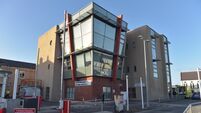Rates pressure on Bank of England's Carney

Interest rates will be kept on hold today as more signs of economic cheer cast doubt over Bank of England governor Mark Carney’s forward guidance strategy.
A raft of exceptionally strong sector surveys this week has pointed to a marked pick-up in growth over the third quarter, reinforcing market expectations for rates to rise sooner than the Bank’s new policy suggests.
Experts are pencilling in another possible statement alongside today’s noon rates decision as Mr Carney battles to win over sceptics of the strategy.
The meeting is the first since the Bank pledged to keep interest rates at a record low of 0.5% until the unemployment rate falls to 7%.
But it has so far failed to have the desired effect on the City, with a series of caveats to the announcement prompting market expectations to be brought forward rather than pushed back.
While the Bank has implied rates will stay on hold until 2016, markets are predicting a hike in the first quarter of 2015.
Mr Carney used his first public speech in Nottingham last week to shore up his strategy with the blunt message that rates will stay low for at least another three years.
Since then, a slew of highly positive figures from all sectors of the economy have only strengthened the market’s views.
Closely watched Markit/CIPS purchasing managers’ index (PMI) readings suggested the powerhouse services sector accelerated at its fastest pace for more than six years in August.
This followed similarly strong readings from the manufacturing and construction sectors, with a composite survey combining all three hitting another record high in August.
The data fuelled hopes that third-quarter growth can beat expansion of 0.7% in the April to June quarter, with Markit suggesting growth of as much as 1.3%.
Michael Hewson, CMC Markets senior market analyst, said: “The Bank could well be in danger of losing credibility if it continues to repeat the line that the recent economic data doesn’t support the increase in market rates, particularly if the third quarter turns out to be even better than the second quarter.”
Signs in the manufacturing PMI of rising input prices worried the market further, given that above-target inflation is one of the so-called knock-outs that could see the Bank break its rates pledge.
But Mr Carney has been quick to stress that despite the positive signs, the UK still lags behind other recovering economies.
He said last week that it could take longer than three years for unemployment to reach the 7% threshold – or a fall of 750,000.
Martin Beck, UK economist at consultancy Capital Economics, agrees that the recovery momentum does not necessarily mean rates will rise sooner than expected.
He pointed out that signs of slowing growth in employment across the sector suggested increased demand is being met more through higher productivity than rises in employment.
“This suggests that firms are meeting the upsurge in demand more through working existing employees harder than by taking on extra workers.
“This supports our and the Monetary Policy Committee’s view that productivity rather than unemployment will gain most from the economic recovery.”
Mr Carney has also hinted at the potential for more economy-boosting measures under the Bank’s quantitative easing (QE) programme, if market rate expectations feed through into broader financial conditions or hamper the recovery.
So while rates will remain on hold at 0.5% this month, there is growing speculation over the Bank’s plans for more asset purchases.
Capital Economics expert Vicky Redwood said she believes MPC members Paul Fisher and David Miles will resume their vote for more QE as early as this month.
Philip Shaw, chief economist at Investec Securities, is pencilling in no change for QE and said Mr Carney made clear in his recent address that it is the Bank rate that counts, rather than market expectations.
Mr Carney pointed out that interest rates on 70% of loans to households and 50% of those to businesses were linked to the Bank rate rather than the market.
But fixed-rate mortgages are linked to market rate expectations and Ms Redwood said borrowers may soon start to see a rise in the cost of these loans as swap rates increase.
















